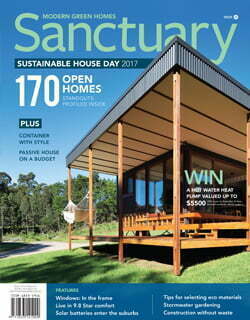City cornucopia

Increasing wellbeing and connection to nature, reducing food miles to food metres, and turning waste streams into resources: it’s increasingly clear that urban agriculture is a vital ingredient for sustainable cities.
Neat rows of raised garden beds already crammed with vegetables and leafy greens is not what you’d normally expect to find in the middle of a new housing development, but that’s what greets you at The Cape, a sustainable housing project on the edge of coastal Cape Paterson, two hours drive south-east of Melbourne.
A glance at the master plan for the development shows that these beds are just the beginning of what will eventually be a 5,000-square-metre garden, with herb beds, a berry garden, orchard, composting and potting benches. The produce grown will supply a cafe and community centre as well as feeding the garden members – interested residents and other locals. “There will be space for 100 gardeners, and we estimate that the garden will produce more than $150,000 worth of produce each year,” says Brendan Condon, the entrepreneur and sustainability advocate behind The Cape.
But while the garden will provide its members with the opportunity to reduce their living costs through avoided food spend, it’s about much more than that; it’s part of a burgeoning urban agriculture movement that’s aiming to bring food production back closer to where we live, reducing the environmental impact of the food we eat and helping address looming food security issues.
It’s an aspect of sustainable living that is often ignored, but as our cities expand and encroach into the surrounding food bowls, peri-urban agricultural areas are being pushed further out, leading to increased transportation distances and greater vulnerability to food supply disruptions for more people. “Projections suggest that the proportion of Melbourne’s food supply that is locally produced will drop from 41 per cent today to less than 20 per cent by 2050,” says Brendan. “But there are huge opportunities to grow food in cities, and awareness of the need and the possibilities is increasing.”
Internationally, urban agriculture gives the sense of being the new ‘clean tech’; in North America and Europe, the sector is seeing a proliferation of startups employing high-tech, intensive methods to produce food in cities. Part of the 100 Resilient Cities Network, New Jersey startup AeroFarms grows leafy greens in trays stacked 11 metres high in a former steel plant; Urban Produce in California uses a similar vertical farm setup and a computer-controlled LED lighting and watering system to grow sixteen acres of food on an eighth of an acre of floor space. Even Kimbal Musk, brother to Tesla’s electric car and clean energy entrepreneur Elon, is getting in on the action with an ‘urban farming accelerator’ called Square Roots, consisting of 10 small ‘test’ farms set up in shipping containers, where young entrepreneurs can try out their urban farming ideas.
In Finland, Exsilio is also using the shipping container model for its ekoFARMER ‘farming module’, “a closed system that is delivered as a turn-key solution that only requires a location, water and electricity outlet”. They claim the yield achievable with their modules will be at least three times that of a standard greenhouse, as plants are stacked over several levels and can be grown all year round with a reduced cultivation period due to the optimal control of light and humidity the system makes possible. At over 100,000 Euros ($150,000) though, it could be a challenge to make the operation of an ekoFARMER profitable.
Although a catch-cry of the industry is ‘turning factories into farms instead of farms into factories’, there’s a lot more to urban agriculture than high-tech, climate-controlled factory style production. Australia’s Urban Agriculture Forum (UAF) defines the term as any food production – including vegetable and fruit growing, livestock raising (especially poultry), beekeeping, aquaculture and hydroponics – in suburban areas, regional centres, cities and towns; “it does not include larger-scale irrigated and broad-acre farming.” It encompasses commercial, community and individual food production on a variety of sites from private backyards and other private land to community gardens, rooftops, public spaces such as nature strips, and the grounds of schools, hospitals and other institutions.
It’s at the lower-tech end that Brendan sees the biggest opportunities. “To grow, plants need light, water, space, and nutrients. There is plenty of all of these available in cities.” He notes that traditional city design involved systems to move stormwater and waste out of them efficiently, and food bowls around the edges. “Population growth and urban expansion are putting increasing pressure on both, but if you can build low-tech, smart food-producing architecture to intercept a city’s water and food waste streams, then you can start producing huge amounts of food.”

Through business Biofilta, Brendan is developing ‘closed loop’ wicking bed garden systems that aim to break down the three critical areas of individual resistance to getting ‘hands-on’ with food production: lack of time, space and expertise. Connected to a rainwater tank, the snap-together beds store water in their bases that’s ‘wicked’ up through the soil to the plant roots as they need it; no daily watering is needed and water efficiency is greatly improved. The subsurface watering also means that a light crust forms at the soil surface, inhibiting weed growth. “The idea is that the beds tip the balance in favour of busy urbanites, by dramatically reducing the watering and weeding required,” says Brendan. “Wicking bed technology has of course been around for a while, but we’re scaling it up. We’re designing quick-to-assemble urban farms that can turn waste streams into resources: they intercept local stormwater and food waste through compost, and produce serious quantities of food for minimal gardening effort.”
Brendan’s business partner Marc Noyce has calculated that when connected to a 10,000 litre rainwater tank collecting from a 200-square-metre Melbourne roof, the water demand of a 40-square-metre Biofilta ‘household farm’ can be met almost entirely with rainwater, and the property’s stormwater outflow will also be reduced by an estimated 70 per cent. “If everyone did it, issues like flooding in the streets would be significantly reduced, and current pipe assets would provide a greater level of service,” he says. A garden this size could produce around 640kg of vegetables each year, enough for the recommended dietary consumption of five adults, and provide the opportunity for food sharing within the neighbourhood and extended family.
At Pocket City Farms, a not-for-profit Sydney enterprise that aims to make use of the city’s unused spaces to grow organic produce, the community building and education aspect of urban farming is as important as the food production. They run a program of workshops and events to empower and encourage locals. For urban dwellers, “it is so easy to take food for granted,” explains general manager Emma Bowen. “Food that you have a connection with is much more precious. Anyone that’s grown their own produce at home knows this, and knowing our farmers also creates this connection: we see the effort in producing the food and understand the necessity to provide fair payment to the farmer in order for them to be able to continue growing good clean food, and to continue to nourish the soil it’s grown in. It helps to ensure food growing is a viable occupation, creating resilience in our food systems into the future.”
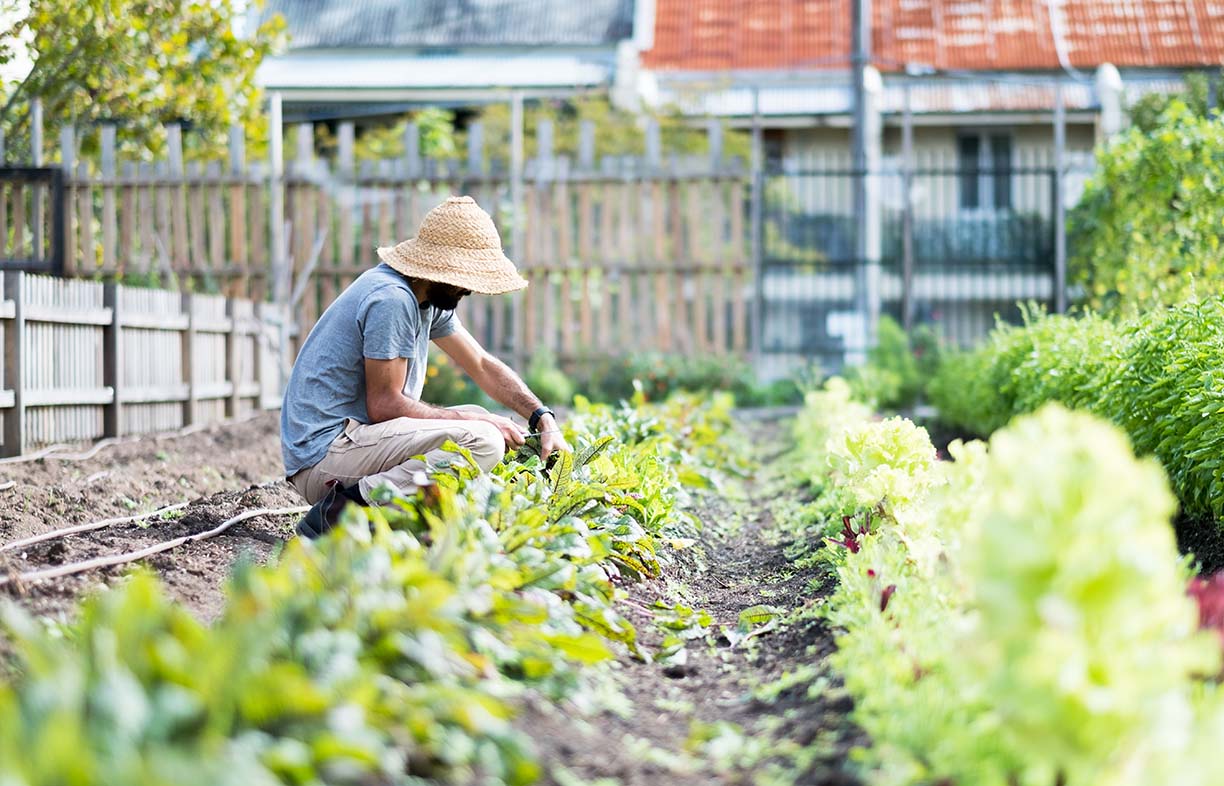

Pocket City Farms’ first urban farm, on the former Camperdown Bowling Club site, opened in 2016 after several years of planning. Emma would like to see better support from government and local councils: “Policies and incentives to encourage land and building owners to unlock their unused land and rooftop spaces would provide encouragement – access to space and trust and interest from those who can make this space available is one of the biggest barriers.” At a government level, local councils are starting to see the importance of urban food production for resilient communities, and the benefits of fostering an increased awareness of the links between food, health and living more sustainably. To pick just a couple of examples, the City of Sydney has developed Sydney City Farm, an urban agriculture project in Sydney Park that features food gardens, a farmers’ market and workshops on topics like edible small space gardening and edible gardening for renters; a community hub, an orchard and even a small cropping area are planned for the future.
Down south, the City of Melbourne’s Rooftop Project has identified almost 240 hectares of rooftops in the municipality that have the potential to house intensive green roofs; this could include sky-high urban agriculture projects. It can be a slow process to get initiatives like urban food production included in strategy, but the City of Melbourne’s Urban Forest Fund – while primarily focussed on greening the walls and rooftops of the city – has some support for innovative urban food if it can be linked to wider community benefits and outcomes. The city is also currently reviewing its Urban Food Policy.
Also in Melbourne, Yarra City Council developed one of the first urban agriculture strategies in Australia, and has appointed an Urban Agriculture Facilitator to implement it. Due to concerns about contaminated soils in this inner-city area, Yarra doesn’t encourage traditional verge gardens; instead, the Strategy focuses on planter boxes on footpaths, in unused laneways, and in other public spaces. It was developed in response to strong community demand, and to manage the fact that residents were already installing gardens in the streets. Now, there are guidelines in place to ensure planter boxes are located in places that are safe for cars, cyclists and pedestrians, and there’s an application process for the boxes, which are provided by the council. The facilitator also runs workshops on gardening and fostering community connections for interested residents, with the aim of making the most of the community building, mental health, waste management and environmental benefits of urban agriculture.
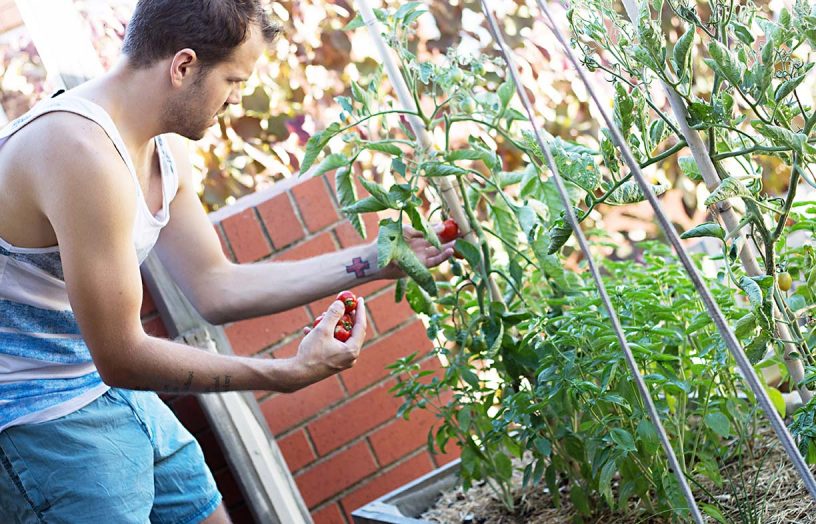
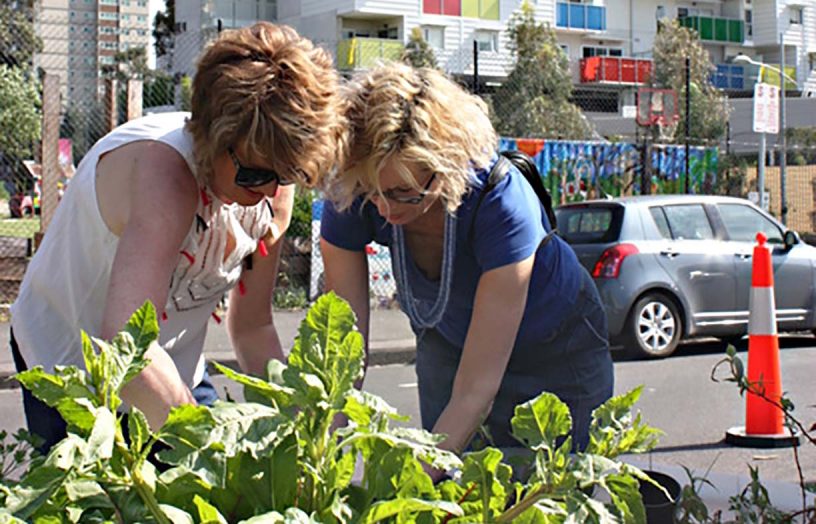
Implementing constructive urban agriculture policies isn’t all plain sailing for local governments, though. The competing priorities of residents and councils, and concerns over safety and liability issues, require careful negotiation and can cause clashes. Recently, in the well-known Urban Food Streets precinct of Buderim, QLD, where many residents have planted productive gardens and fruit trees on their verges for all to share, a standoff over a council requirement for permits and liability insurance led to sensational headlines when the Sunshine Coast Council demolished a number of the gardens. Other councils have successfully sidestepped this particular issue; for example, in the WA City of Bayswater, red tape was deliberately removed so that residents are able to plant whatever they like on their verges without needing a permit or insurance, as long as they follow a one-page guideline document.
Well-designed urban food gardens have been shown to improve the value of nearby properties. One study in New York found that a community garden can raise neighbouring property values by as much as 9 per cent within five years of the garden’s opening; “This makes them desirable green infrastructure for both property developers and homeowners,” says Brendan. He believes that all new housing developments should have a food production plan – something that Heather and Neil Barrett, the drivers of another Victorian project, The Paddock Eco Village in Castlemaine, are already embracing.
The Paddock will consist of 27 homes built on 1.4 hectares of bushland that’s been owned by the Barretts for over 30 years. “Along with wetlands and native gardens, around a third of the total space will be dedicated to food growing, with shared food gardens and orchards,” says Neil. “We’re keen gardeners ourselves, and feel that growing food at home is one thing people actually can do to combat climate change. Our development will give residents a chance to do something on the ground, in their own small way.”
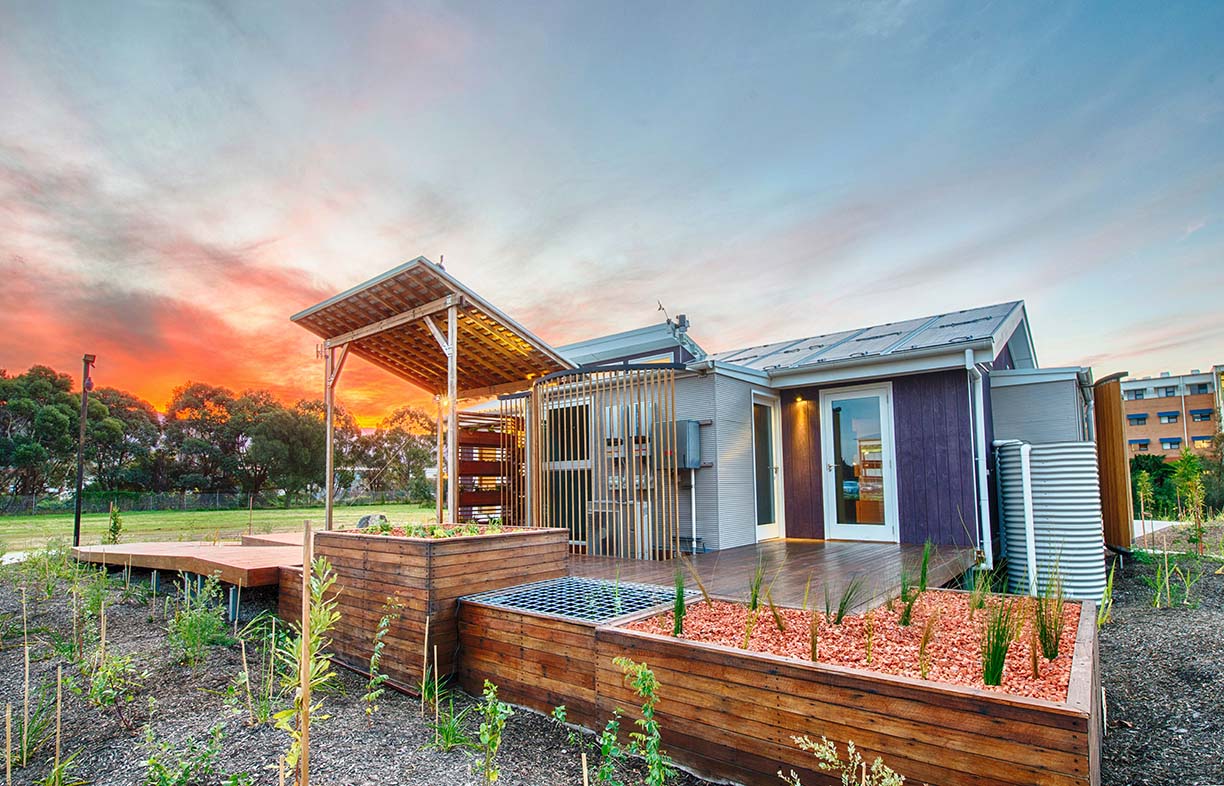
The gardens are also an important component of the development’s design to meet the Living Building Challenge (LBC), a rigorous performance standard that calls for the creation of “regenerative spaces that connect occupants to light, air, food, nature and community, that are self-sufficient, and that remain within the resource limits of the site”. Provision for urban agriculture is one of the LBC’s 20 ‘imperatives’. In addition, the food garden’s wicking beds and other garden areas will allow greywater to be filtered and used on site, and negotiations are underway with the local water authority to site a small blackwater treatment system on the property too – along with rainwater collection and reuse, these measures will go a long way to meeting the LBC’s requirement for waste and water management. [For more on LBC see Caroline Pidcock’s article on zero emissions buildings in Sanctuary 40.]
Only just launched, and with construction expected to begin in early 2018, it’s yet to be seen exactly how the gardens at The Paddock will operate. “We’re putting in place the infrastructure, and then we’ll be listening to how the future residents would like to run it,” says Neil. “We just know that 35 per cent of the land will be devoted to food growing – how it actually happens will be determined along with the future residents.”
No matter how enthusiastically we embrace urban food production and how much savvy technology we bring to it, it’s not going to replace traditional rural agriculture. There are some things – like broadacre crops – that aren’t feasible in an urban setting. However, as our urban populations grow, finding ways to bring a significant proportion of our food production closer to where we live is important for community wellbeing and for the creation of true sustainable cities. As Brendan says, “Everyone’s aware of the food miles concept; we need to reduce the miles to food metres.”
1 Real Estate Economics: “The Effect of Community Gardens on Neighboring Property Values” bit.ly/1JBDXIe
Further reading
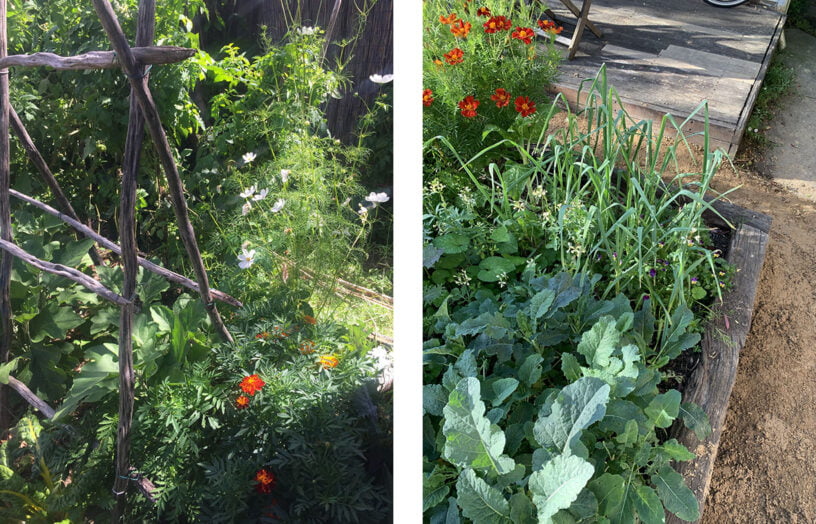 Outdoors
Outdoors
Gardens to go
Jacqui Hagen is a keen gardener who has transformed the gardens of numerous rental properties across Melbourne. She shares some tips and tricks for bringing your garden with you when it’s time to move.
Read more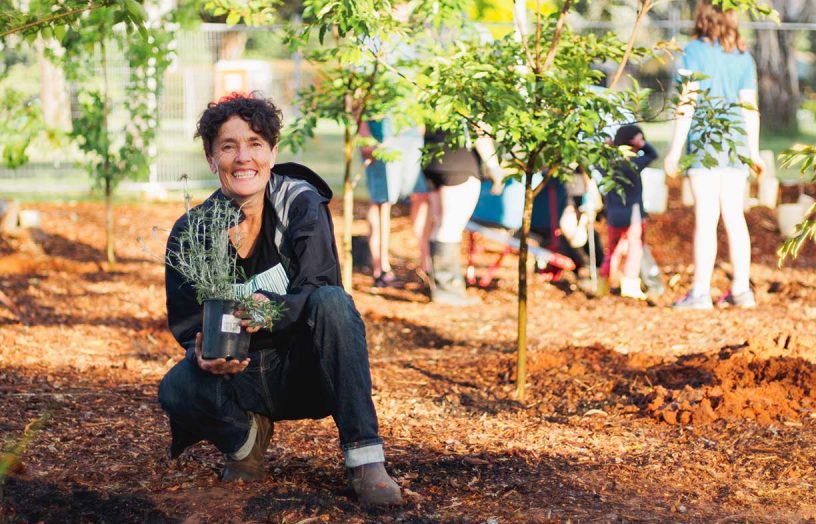 Outdoors
Outdoors
Pocket forests: Urban microforests gaining ground
Often no bigger than a tennis court, microforests punch above their weight for establishing cool urban microclimates, providing wildlife habitat and focusing community connection. Mara Ripani goes exploring.
Read more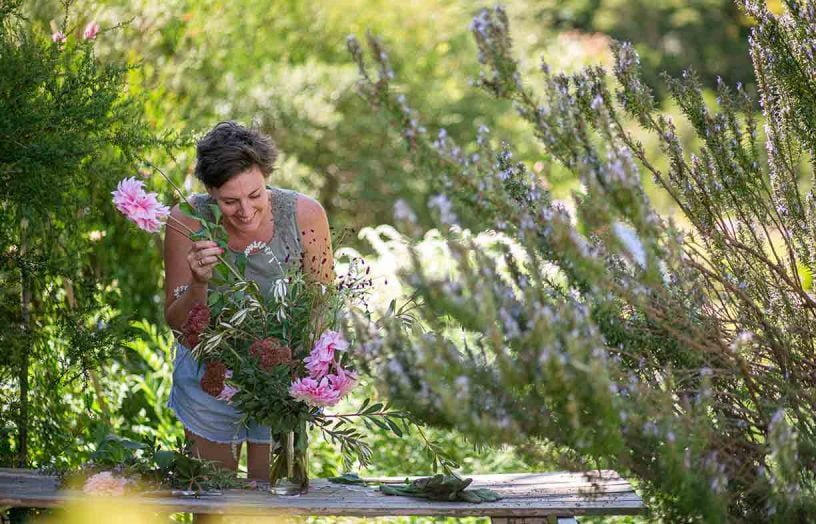 Outdoors
Outdoors
Nourished by nature: Garden design for mental health and wellbeing
There’s plenty of evidence that connection with nature is beneficial for both mind and body. We speak to the experts about designing gardens for improved mood and wellbeing, and what we can do at home to create green spaces that give back in a therapeutic way.
Read more

